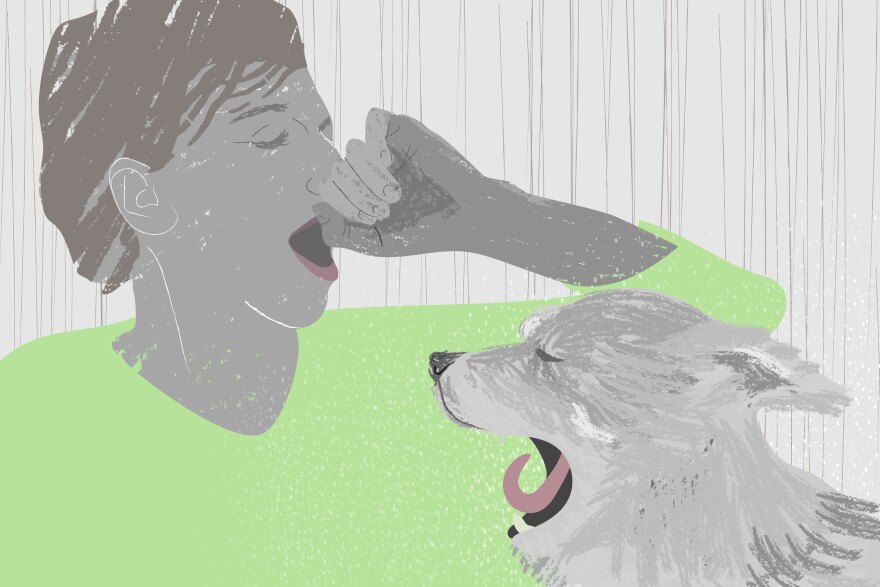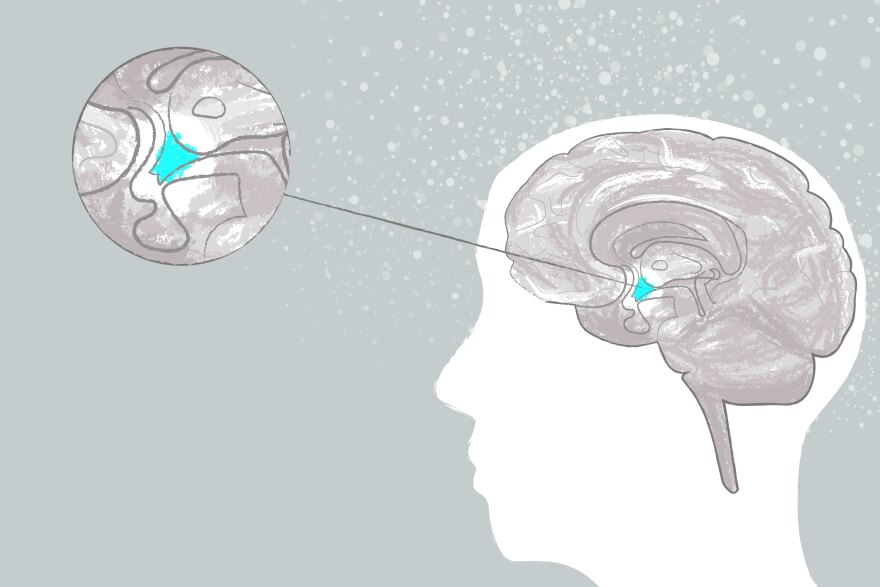In 1962, a strange epidemic swept through several communities in Tanganyika, present-day Tanzania. It wasn’t a virus, but laughter among teenage schoolgirls. The contagious laughter, which lasted for about two and a half years, afflicted about 1,000 people and forced at least 14 schools to temporarily shut down.
Experts later determined that the origin of the epidemic was psychological, perhaps related to stress caused by the presence of British colonialism. But such events have raised scientific questions about why humans can’t control behaviors such as laughing, yawning, coughing and shivering — and why they spread among groups of people.
“We are a part of a human herd whose behavior is often the involuntary playing out of an ancient neurological script that is so familiar that it goes unnoticed,” wrote neuroscientist Robert Provine in his book, "Curious Behavior."
“Consider what is really happening when your body is hijacked by an observed yawn or you spontaneously join others in a communal chorus of ha-ha-ha," Provine wrote. "You don’t decide to yawn or laugh contagiously. It just happens.”
Provine discovered that people are 30 times more likely to laugh around others than alone. To date, there has been much research that’s observed socially contagious behaviors in humans and animals, but scientists are just starting to look into what makes them ripple through groups of people.
Empathy may not have much to do with it
Many studies have suggested that empathy could explain contagious yawning. A study published a year ago, for example, indicated thatwomen are more susceptible to catch yawns than men. Researchers also noted that women score higher on empathy tests, and thought the two might be associated.

Another study published in 2008 found that dogs may yawn in response to their owners, but not to strangers or other dogs. Researchers wrote that because dogs are incredibly skilled at reading human cues and generally have unique social interactions with people, “there is the potential that dogs may also have developed the capacity for empathy towards humans, and may catch human yawns.”
Other studies, however, suggest that empathy is less significant in contagious behaviors than we might think. A paper in 2014 published by Duke University researchers, for example, analyzed various factors that influenced yawning among more than 300 human volunteers. Scientists considered a number of influencers such as empathy, energy levels and age. They saw that contagious yawning decreased among older people.
“In our study, there was a connection between contagious yawning and empathy, but it was explained by a stronger connection between contagious yawning and age,” said Elizabeth Cirulli, a geneticist at Duke University and an author of that paper.
Other research also showed that young children aren’t likely to catch yawns from other people, either.
Itch researchers at Washington University believe empathy has very little to do with such behaviors. This month, they published a study in the journal Science that showed that mice will scratch themselves in response to seeing videos of other mice that have chronic itch problems.
“At the beginning, this [experiment] may sound like a crazy idea because, as you know, mice are nocturnal. They have very poor vision,” said Zhou-Feng Chen, director for the school’s Center for the Study of Itch.
Chen and his colleagues examined the brains of the non-itchy mice in the study and found that a specific 

region, called the suprachiasmatic nucleus, released a chemical that’s been known to signal when there’s an itch that needs to be scratched.
“Basically, our study shows those kinds of contagious behaviors are instinctive behaviors and are hardwired into our neurocircuitry,” Chen said.
However, more research is needed to understand exactly how involved the brain is when we uncontrollably copy each other’s behaviors. As Cirulli noted, other factors need to be examined. Empathy, she said, shouldn’t be ruled out, but is likely just as connected to such behaviors as height is to weight.
“I don’t think empathy is totally unrelated,” Cirulli said. “It’s just that it’s absolutely not everything that’s going on with contagious yawning. In some cases, it’s a proxy for something else.”
We behave like the pack to survive

In the animal kingdom, one principle that prevails is strength in numbers. Snow geese, for example, will fly in groups as large as 5,000. A pack of zebras will whine loudly when they detect a predator nearby.
Some scientists believe that humans evolved to uncontrollably copy others’ behavior, as a means of communicating important information.
“You can imagine millions of years ago when animals lived widely and maybe living in places where there are parasites," Chen said. "If all the animals begin to scratch, it could mean the area that they’re in may be dangerous.”
He further speculated that as scratching became a regular way to alarm others that they needed to leave certain environments, it’s possible that the behavior became innate and written into our genetics over time.
“From an evolutionary point of view, contagious behaviors actually help animals to better survive because you don’t have to learn everything from scratch,” Chen said.
How the brain works
While it might seem frivolous to study why we catch yawns and participate in other kinds of unconsciously provoked micmicry, the research could provide fundamental insight into how our brains work and develop. For instance, a 2009 study by University of Zurich researchers showed that contagious yawning and laughing happened much less frequently with people who have schizophrenia. Yawning also spread much less among people with autism.
Such findings still need further research to be understood. However, it’s promising that contagious scratching is observed among mice, for example, since they’re often used as experimental subjects to understand brain diseases.
Reflecting on her contagious yawning study, Cirulli mused that it would be interesting to study how genetics might influence a person’s susceptibility to this behavior and how that might be connected to neurological conditions.
“Because big genetic studies have been done on schizophrenia and autism and other diseases, you can calculate someone’s risks of developing those diseases from their genetic information and you can see if it’s associated with contagious yawning,” she said.
Follow Eli Chen on Twitter: @StoriesByEli





